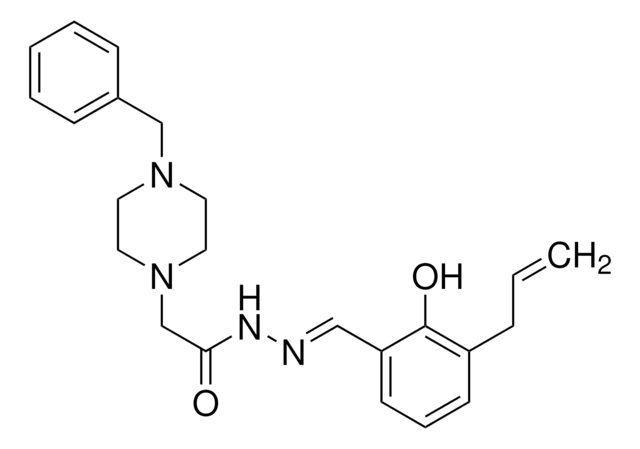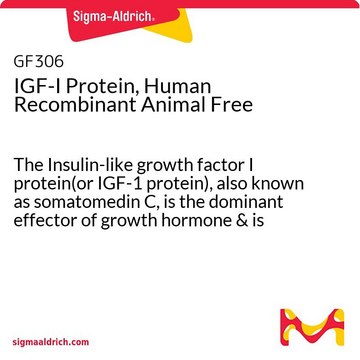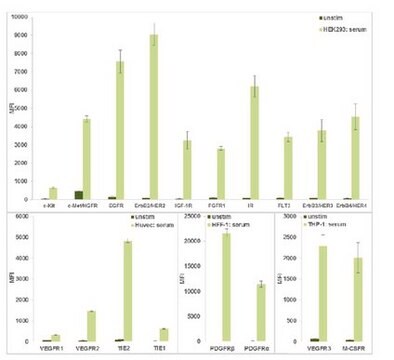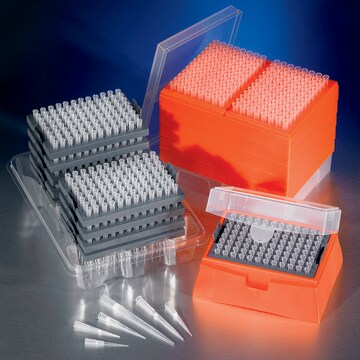HTS114M
ChemiSCREEN Human PAC1-long Receptor Membrane Preparation
Human PAC1 long isoform / PACAP GPCR membrane preparation for Radioligand binding Assays & GTPγS binding.
Zaloguj sięWyświetlanie cen organizacyjnych i kontraktowych
About This Item
Kod UNSPSC:
41106514
eCl@ss:
32161000
NACRES:
NA.84
Polecane produkty
pochodzenie biologiczne
human
Poziom jakości
rekombinowane
expressed in Chem-1 cells
producent / nazwa handlowa
ChemiScreen
Chemicon®
metody
ligand binding assay: suitable (GTPγS)
radioligand binding assay (RLBA): suitable
numer dostępu NCBI
numer dostępu UniProt
Warunki transportu
dry ice
Opis ogólny
Human ADCYAP1R1 cDNA encoding the long isoform of PAC1
PACAP (pituitary adenylyl cyclase-activating peptide) is a peptide that exists in 2 forms, 27 or 38 amino acids, and is related to vasoactive intestinal peptide (VIP). Three related class B GPCRs, PAC1, VPAC1 and VPAC2, bind to PACAP; however, VPAC1 and VPAC2 have a much higher affinity for VIP than does PAC1 (Vaudry et al., 2000). Several splice variants of PAC1 result in proteins that differ at the N-terminus and third intracellular loop; these variants differ in their affinities for PACAP and abilities to activate Gq and Gs. High expression of PAC1 is observed in the CNS and the adrenal medulla. Studies with PAC1-null mice indicate that PAC1 plays important roles in regulation of circadian rhythms, neutrophil migration, and pulmonary vascular tone (Hannibal et al., 2001; Martinez et al., 2005; Otto et al., 2004). Chemicon′s PAC1-long membrane preparations are crude membrane preparations made from our proprietary stable recombinant cell lines to ensure high-level of GPCR surface expression; thus, they are ideal HTS tools for screening of antagonists of PAC1-long interactions with PACAP27. The membrane preparations exhibit a Kd of 2.7 nM for [125I]-PACAP27. With 5 µg/well PAC1-long Membrane Prep and 0.75 nM [125]-PACAP27, a greater than 20-fold signal-to-background ratio was obtained.
Zastosowanie
Radioligand binding assay, and GTPγS binding.
Działania biochem./fizjol.
GPCR Class: B
Protein Target: PAC1 long isoform / PACAP
Target Sub-Family: VIP/PACAP
Jakość
Signal:background and specific binding values obtained in a competition binding assay with varying amounts of PAC1-long membrane prep:
SPECIFICATIONS:
1 unit = 5 µg membrane preparation
Bmax: 52.0 pmol/mg
Kd: 2.7 nM
| 10 µg/well | 5 µg/well | |
|---|---|---|
| Signal:Background | 22.9 | 29 |
| Specific Binding (cpm) | 63650 | 62987 |
SPECIFICATIONS:
1 unit = 5 µg membrane preparation
Bmax: 52.0 pmol/mg
Kd: 2.7 nM
Charakterystyka techniczna
Inucbation Conditions
Membranes are mixed with radioactive ligand and unlabeled competitor (see Figures 1 and 2 for concentrations tested) in binding buffer in a nonbinding 96-well plate, and incubated for 1-2 h. Prior to filtration, a GF/C 96-well filter plate is coated with 0.33% polyethyleneimine for 30 min, then washed with 50mM HEPES, pH 7.4, 0.5% BSA. Binding reaction is transferred to the filter plate, and washed 3 times (1 mL per well per wash) with Wash Buffer. The plate is dried and counted. Binding buffer: 50 mM Hepes, pH 7.4, 5 mM MgCl2, 1 mM CaCl2, 0.2% BSA, filtered and stored at 4°C Radioligand: [125I] PACAP27 (Perkin Elmer # NEX294) Wash Buffer: 50 mM Hepes, pH 7.4, 500mM NaCl , 0.1% BSA, filtered and stored at 4°C.
One package contains enough membranes for at least 200 assays (units), where an unit is the amount of membrane that will yield greater than 20-fold signal:background with 125I-labeled PACAP27 at 0.75 nM.
Membranes are mixed with radioactive ligand and unlabeled competitor (see Figures 1 and 2 for concentrations tested) in binding buffer in a nonbinding 96-well plate, and incubated for 1-2 h. Prior to filtration, a GF/C 96-well filter plate is coated with 0.33% polyethyleneimine for 30 min, then washed with 50mM HEPES, pH 7.4, 0.5% BSA. Binding reaction is transferred to the filter plate, and washed 3 times (1 mL per well per wash) with Wash Buffer. The plate is dried and counted. Binding buffer: 50 mM Hepes, pH 7.4, 5 mM MgCl2, 1 mM CaCl2, 0.2% BSA, filtered and stored at 4°C Radioligand: [125I] PACAP27 (Perkin Elmer # NEX294) Wash Buffer: 50 mM Hepes, pH 7.4, 500mM NaCl , 0.1% BSA, filtered and stored at 4°C.
One package contains enough membranes for at least 200 assays (units), where an unit is the amount of membrane that will yield greater than 20-fold signal:background with 125I-labeled PACAP27 at 0.75 nM.
Postać fizyczna
Liquid in packaging buffer: 50 mM Tris pH 7.4, 10% glycerol and 1% BSA with no preservatives. Packaging method: Membranes protein were adjusted to the indicated concentration in packaging buffer, rapidly frozen, and stored at -80°C.
Przechowywanie i stabilność
Maintain frozen at -70°C for up to 2 years. Do not freeze and thaw.
Informacje prawne
CHEMICON is a registered trademark of Merck KGaA, Darmstadt, Germany
Oświadczenie o zrzeczeniu się odpowiedzialności
Unless otherwise stated in our catalog or other company documentation accompanying the product(s), our products are intended for research use only and are not to be used for any other purpose, which includes but is not limited to, unauthorized commercial uses, in vitro diagnostic uses, ex vivo or in vivo therapeutic uses or any type of consumption or application to humans or animals.
Ta strona może zawierać tekst przetłumaczony maszynowo.
Kod klasy składowania
12 - Non Combustible Liquids
Klasa zagrożenia wodnego (WGK)
WGK 2
Temperatura zapłonu (°F)
Not applicable
Temperatura zapłonu (°C)
Not applicable
Certyfikaty analizy (CoA)
Poszukaj Certyfikaty analizy (CoA), wpisując numer partii/serii produktów. Numery serii i partii można znaleźć na etykiecie produktu po słowach „seria” lub „partia”.
Masz już ten produkt?
Dokumenty związane z niedawno zakupionymi produktami zostały zamieszczone w Bibliotece dokumentów.
Carmen Martínez et al.
Journal of leukocyte biology, 77(5), 729-738 (2005-01-22)
Infections caused by Gram-negative bacteria constitute one of the major causes of septic shock, which results from the inability of the immune system to limit bacterial spread during the ongoing infection. In the last decade, it has been demonstrated that
D Vaudry et al.
Pharmacological reviews, 52(2), 269-324 (2000-06-02)
Pituitary adenylate cyclase-activating polypeptide (PACAP) is a 38-amino acid peptide that was first isolated from ovine hypothalamic extracts on the basis of its ability to stimulate cAMP formation in anterior pituitary cells. PACAP belongs to the vasoactive intestinal polypeptide (VIP)-glucagon-growth
Christiane Otto et al.
Circulation, 110(20), 3245-3251 (2004-11-03)
Pituitary adenylate cyclase-activating polypeptide (PACAP), acting via 3 different G protein-coupled receptors, has been implicated in the regulation of several homeostatic systems in the body, including cardiopulmonary control. To define the physiologic role of the PACAP-preferring type I receptor, PAC1
J Hannibal et al.
The Journal of neuroscience : the official journal of the Society for Neuroscience, 21(13), 4883-4890 (2001-06-27)
The circadian clock located in the suprachiasmatic nucleus (SCN) organizes autonomic and behavioral rhythms into a near 24 hr time that is adjusted daily to the solar cycle via a direct projection from the retina, the retinohypothalamic tract (RHT). This
Nasz zespół naukowców ma doświadczenie we wszystkich obszarach badań, w tym w naukach przyrodniczych, materiałoznawstwie, syntezie chemicznej, chromatografii, analityce i wielu innych dziedzinach.
Skontaktuj się z zespołem ds. pomocy technicznej







